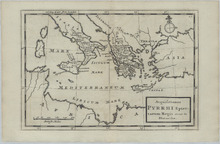[The Beginning of My Words] V. 2
Model
Paged Content
Description
"ii (parchment) + iv + 41 folios on paper (unidentified watermark), modern foliation in pencil in Arabic numerals in upper-left corner of recto, folios after f. 36 and f. 39 skipped, complete (collation i-iii 10 iv-v 4 vi 2 [+1]), no catchwords, upper and outer margins only ruled in blind (justification 168 x 108 mm.), written in a compact Italian cursive script in brown ink in 26 to 33 long lines, new paragraphs indicated via indentation and/or triangular dot arrangements over the incipits, periodic vocalization, justification via abbreviation and use of anticipatory letters, marginalia in hand of primary scribe throughout, sometimes partially cropped, corrections and strikethroughs in hands of primary and secondary scribes, censors's signatures on versos of ff. iii (Renato da Mod[en]a, 1621) and [40] (Gio[vanni] Dom[enico] Vistarini, 1610; Gir[olamo] da Dura[zza]no, 1641; Fra Luigi [da Bologna], febraro 1599), slight staining to parchment flyleaves, faint dampstaining radiating out from gutter at head and along lower edge throughout, gutters intermittently strengthened, episodic ink blotches or smudging, small hole in f. vi, light worming in lower margins of ff. 2-8 and outer edges of ff. 18-27. Bound in dark blue library buckram, Montefiore name lettered in gilt along spine, Halberstam (124) and Montefiore (409) shelf marks taped to spine, spine splitting along joints at head, light damage to tailcap, corners rounded, modern paper pastedowns and flyleaves. Dimensions 190 x 140 mm.nnOne of the most systematic, well organized Hebrew grammars of the thirteenth century, Petah devarai is a monument of Sephardic linguistic scholarship whose importance as an introduction to the topic is attested in part by its editio princeps of 1492; there is still no modern critical edition. The present volume survives as a neatly written, dated copy of this text, and it is one of only two currently in private hands.",Full pdf available, https://dl.mospace.umsystem.edu/mu/islandora/object/mu%3A444756/datastream/PDF/view
Service File - Download

